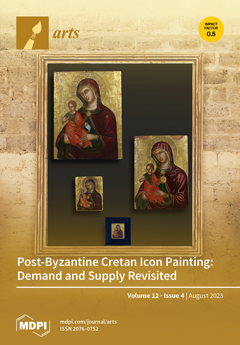The current scholarship on
testimonio largely focusses on its application in literature, failing to address the genre’s possibilities beyond written and spoken narratives. However, voices that exist outside of the literary realm have employed
testimonio-driven strategies to produce witness accounts of events
[...] Read more.
The current scholarship on
testimonio largely focusses on its application in literature, failing to address the genre’s possibilities beyond written and spoken narratives. However, voices that exist outside of the literary realm have employed
testimonio-driven strategies to produce witness accounts of events and experiences that were previously ignored by or erased from the collective consciousness. Broadening the genre’s scope, this article examines visual manifestations of
testimonio in contemporary Cuban and diasporic art, focusing on works by Coco Fusco, Felix González-Torres, and Ana Mendieta that speak to personal and collective experiences of trauma. Experiences associated with exile, displacement, and erasure are particularly relevant to this article, as the artists in focus identify as dissident, immigrant, Latinx, queer, woman, and/or Other. Given the growing interest in accessible approaches to reworking trauma, this article contributes towards the current scholarship on nuanced understandings of healing, ultimately participating in uncovering the complexities of living through and with trauma. The works discussed offer critical reflections related to the AIDS crisis, colonization, and violence against female and Latinx bodies, which have produced personal, collective, and generational traumas that are rarely acknowledged by Western societies. Therefore, by employing a framework centered on
testimonio, this article reveals possibilities for marginalized and minoritized spectators to partake in the reworking of trauma through witnessing, while also illuminating, the limitations of art’s healing capabilities for victims.
Full article
 to open them.
to open them.



